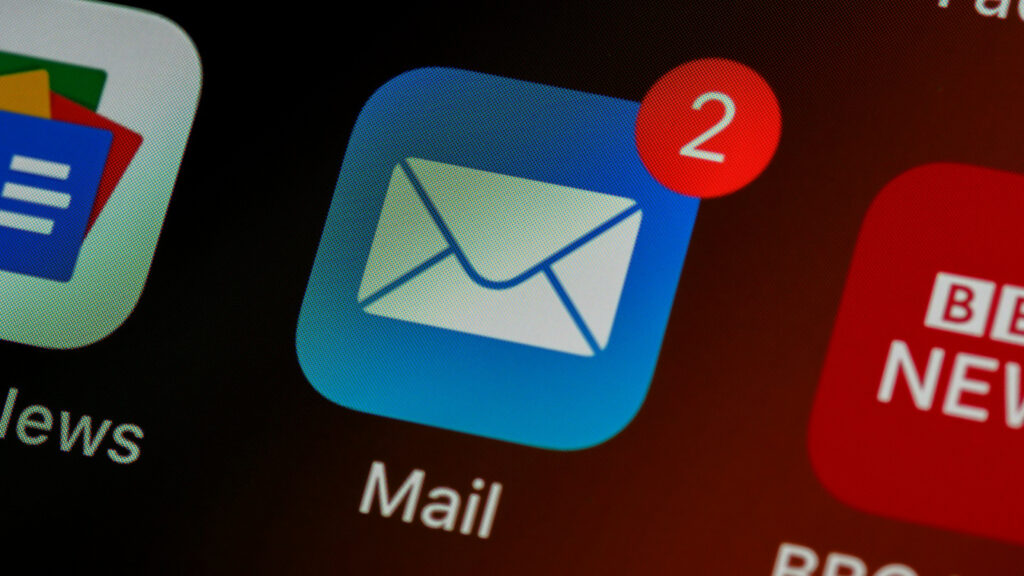
HOME / BLOG / STATISTICS
Email Marketing Statistics 2025: 93+ Stats & Insights [Expert Analysis]
- October 18, 2025
- Bill Nash
- 4:33 pm
In this updated 2025 report, we’ve gathered 100+ of the most important email marketing stats from verified sources to help you shape your strategy this year.
Table of Contents
Global Usage & Growth
The number of email users worldwide in 2025 is estimated at ~4.6 billion.
The number of global email users is projected to reach ~4.85 billion by 2027.
In 2024, approximately 361.6 billion emails were exchanged daily worldwide.
Daily email volume is expected to surpass 376 billion emails by 2025.
By 2027, daily email volume could reach ~408 billion.
Email marketing revenue globally is projected to reach US$17.9 billion by 2027.
Email marketing ROI (return on every dollar spent) averages about $36-$42 for every $1 spent.
Some sources say ROI can be as high as 3600% (i.e. $36 return per $1).
About 99% of email users check their inbox at least once daily.
Many users check email multiple times per day (some up to ~20 times).
Performance & Engagement Benchmarks
Average open rate across all industries is ~32.55% (one source).
Average click-through rate (CTR) globally is ~2.03%-2.62%.
One benchmark lists average open rate ~35.63% across industries.
Average unsubscribe rate is ~0.15%.
Average bounce rate in one report: ~10.31%.
In a sample table: overall open rate 19.21%, CTR 2.44% in one dataset.
Industry-specific: Tourism/Hospitality open rate ~46.06%.
Industry-specific: Technology/SaaS open rate ~38.1%.
Responsive/mobile-friendly design can increase unique mobile clicks by ~15%.
Emails that include images had an average open rate ~30.27%.
Consumer Behavior & Preferences
60% of consumers prefer brands to contact them via email (over other channels).
59% of consumers say they have made a purchase as a result of a marketing email.
Over 50% of users delete an email if it’s not optimized for mobile.
Mobile email usage accounts for over 50% of all email opens in 2025.
63% of people open brand emails when looking for discounts.
79% of Millennials and 57% of Gen Z prefer to be contacted by brands via email.
51% of consumers believe email is the most convenient way for businesses to communicate with them.
96% of recipients have unsubscribed because emails were sent too frequently.
Email Strategy & Automation
Automated emails generate ~320% more revenue than non-automated ones.
Personalized emails see ~26% higher open rates.
Segmenting email lists can lead to up to ~760% increase in email revenue in one case.
54% of marketers personalize email content.
72% of marketers rate personalization as highly effective.
71% of marketers find automation effective.
Small businesses use email for 81% of customer acquisition and 80% for retention.
B2B marketers: ~79% pick email for content distribution.
Timing, Frequency & List Management
Some send-time data: Tuesday sends saw higher CTR (~2.73%) and Thursday had higher open rates (~18.6%).
33% of marketers send weekly emails; 26% send multiple times per month.
Double opt-in vs single opt-in: Industries w/ higher double opt-in tend to have more engagement.
50% of recipients will delete an email if it’s not mobile optimized.
Industry Insights
Non-profits open rate: ~38.56%.
Education open rate: ~39.50%, CTR ~2.33%.
Real estate open rate ~33.75%, CTR ~1.31%.
Dining & Food Services CTR ~0.81%.
According to Selzy (2024): email marketing’s usage rate for outbound is ~78%.
Additional Metrics & Observations
On average, a marketing email user spends ~10 seconds reading brand emails.
Professionals check their email ~15 times per day (or every ~37 minutes).
Emails sent on mobile devices: ~75% of Gmail users read emails on mobile.
Some estimate that 4 out of 5 marketers would rather give up social media than email.
Email gains customers 40 times better than Facebook and Twitter combined, per one claim.
Trends & Future Outlook
AI-driven email marketing yields ~13% increase in click-through rates and ~41% rise in revenue.
9 out of 10 marketers want AI to take on email marketing operations by 2026.
Responsive/adaptive/hybrid design is used by ~63% of email marketing teams.
The market value of global email marketing is projected at ~$36.3 billion by 2033.
Mobile vs desktop: ~81% of SMB sales now influenced by mobile search/ experience — implying mobile email optimization is critical.
More Specifics & Benchmarks
Average open rate for “Faith-based organizations” ~41.30%.
Average open rate for “Childcare services” ~47.17%.
One source lists average open rate for “Media & Publishing” as ~75%.
Average CTOR (click-to-open rate) for retail/ e-commerce (home & garden) ~1.8% CTR.
In one benchmark table: Unsubscribe rate ~0.14% and spam rate ~0.01%.
Average CTR across all industries ~2.6% (in one dataset).
For SMBs: average open rate by industry ~33% (range ~29-38%).
For “Advertising & marketing” industry: open rate ~19.30%, CTR ~2.60%.
For “Automotive & aerospace”: open rate ~12.60%, CTR ~1.20%.
80% of SMEs claim email marketing helps retain customers.
~81% of companies use email as a foundation of their marketing.
37% of businesses are increasing their email marketing budget in 2025.
~40% of subscribers view emails in Dark Mode.
Mobile opens (smartphone) dominate: 75% of Gmail users read emails on mobile.
More than 50% of users delete an email if it doesn’t display correctly on their phone.
76% of unsubscribers claim frequency of emails was the reason.
Marketing emails: CTOR ~14.1% (in one dataset).
In one dataset: ~37% of people check email before going to work; 11% check immediately upon waking.
~58% of people check their inbox first thing in the morning.
Average number of email accounts for a user ~1.86.
Marketing emails senders who segment lists see much higher revenue — e.g., “up to 760% increase” in one claim.
In 2024, one study of 40 billion emails found email marketing’s usage rate for outbound marketing was 78% (up ~15% year-over-year).
In one benchmark, the “All industries” average open rate was ~42.53%, CTR ~5.14%.
“Arts & Entertainment” industry: open rate ~51.19%, CTR ~4.16%.
“Automotive” industry: open rate ~39.69%, CTR ~5.76%.
Emerging Themes & Tips
Email remains one of the most cost-effective channels in digital marketing given its high ROI.
Mobile optimization is not optional — many users will delete poorly formatted mobile emails.
Automation + segmentation = significantly higher revenue potential.
Personalization continues to drive better engagement.
Benchmarks vary widely by industry — always compare your results to your industry.
Frequency matters: too many or irrelevant emails drive unsubscribes.
The inbox is crowded — subject lines, timing, and relevance matter more than ever.
Dark Mode and other user interface trends influence email design (e.g., ~40% view emails in Dark Mode).
Email deliverability and reputation (IP/domains) are increasingly important (though fewer direct stats here).
Emerging technologies (AI, interactive emails) are gaining traction in email marketing.
80% of marketers say email is more important than social media for customer retention.
~58% of email users check their inbox while watching TV.
~49% of email users’ daily received emails are spam in one Reddit-derived stat.
~85% of emails are read on smartphones, but answered on a computer (in one forum quote).
~8 hours per week is the average time professionals spend managing/organising emails (in one forum stat).
For e-commerce: automation flows (abandoned cart, post-purchase) generate up to ~30× more revenue per recipient than campaigns.
~22% of marketers send 2-3 emails daily.
“Click-to-open rate” (CTOR) in one benchmark: ~11.95%.
~98% of Gen X and Millennials depend on email more than any other generation (per one claim).
The average “All industries” CTR in one benchmark table: ~5.14%.
Ready to Grow Your Business?
At Marketing LTB, we specialize in helping businesses like yours thrive online. From strategic digital marketing and branding to web development and social media management, we offer the tools and expertise to elevate your brand and drive real results.
Let’s build something amazing together, get in touch with us today!

About Marketing LTB
Marketing LTB is a full-service marketing agency offering over 50 specialized services across 100+ industries. Our seasoned team leverages data-driven strategies and a full-funnel approach to maximize your ROI and fuel business growth. Discover how our expertise can drive revenue for your business>

About the author, Bill Nash
Bill Nash is the CMO of Marketing LTB with over a decade of experience, he has driven growth for Fortune 500 companies and startups through data-driven campaigns and advanced marketing technologies. He has written over 400 pieces of content about marketing, covering topics like marketing tips, guides, AI in advertising, advanced PPC strategies, conversion optimization, and others.
